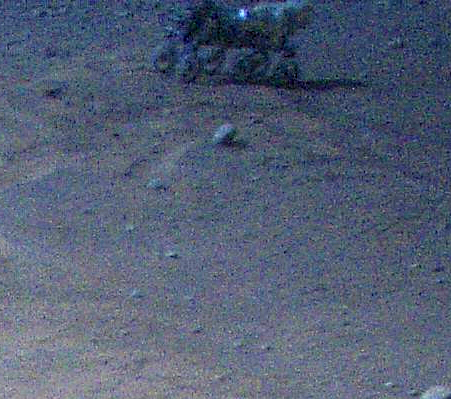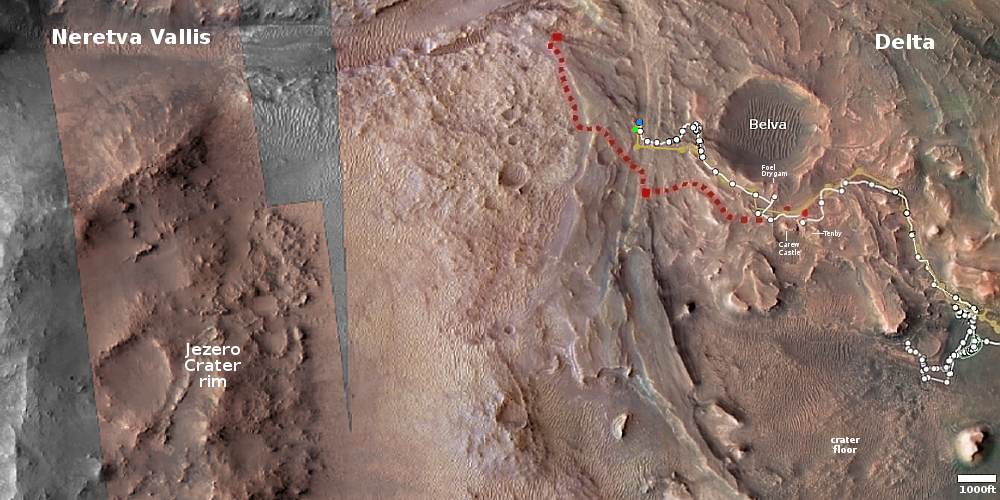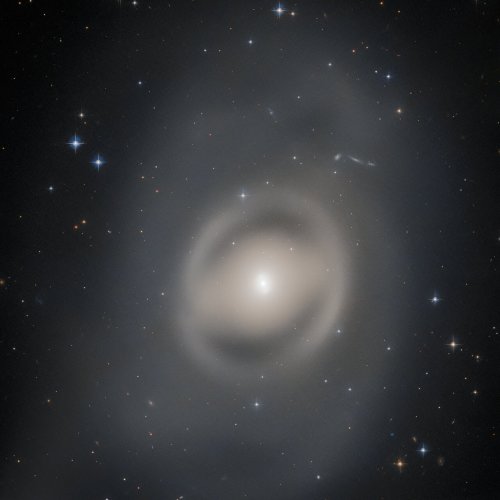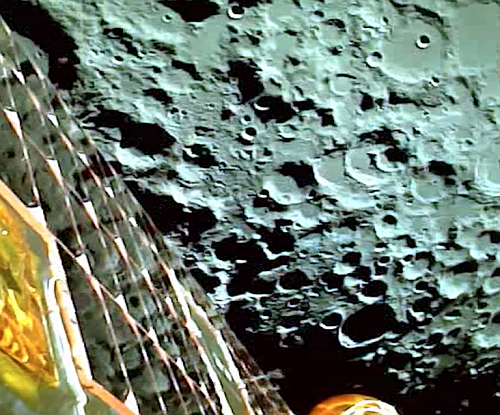Ingenuity snaps picture of Perseverance during 54th flight
During Ingenuity’s 54th flight, a short vertical hop sixteen feet up and down that lasted only 25 seconds, the helicopter’s color camera managed to get a picture of the rover Perseverance, only about 200 feet away to the north.
That picture, cropped and enhanced to post here, is to the right. It shows Perseverance just inside the picture’s upper edge. Its graininess illustrates in a sense the engineering test nature of Ingenuity. It was never expected to last this long and to take actual scouting or science imagery. It was supposed to complete a 30 day program of a handful of test flights, proving it was possible to fly in Mars’ very thin atmosphere (1/1000th that of Earth). Instead, it has lasted years, and completed 54 flights, keeping ahead of Perseverance and providing the rover team scouting images of the ground they wish to travel.
During Ingenuity’s 54th flight, a short vertical hop sixteen feet up and down that lasted only 25 seconds, the helicopter’s color camera managed to get a picture of the rover Perseverance, only about 200 feet away to the north.
That picture, cropped and enhanced to post here, is to the right. It shows Perseverance just inside the picture’s upper edge. Its graininess illustrates in a sense the engineering test nature of Ingenuity. It was never expected to last this long and to take actual scouting or science imagery. It was supposed to complete a 30 day program of a handful of test flights, proving it was possible to fly in Mars’ very thin atmosphere (1/1000th that of Earth). Instead, it has lasted years, and completed 54 flights, keeping ahead of Perseverance and providing the rover team scouting images of the ground they wish to travel.













